Consonants
What are Consonants?
Consonants are speech sounds that are produced by obstructing the flow of air through the vocal tract. They are produced by closing or narrowing the vocal tract in some way, creating turbulence as the air flows through the constriction.
Types of Consonants
There are several types of consonants, including:
- Plosives: These are consonants produced by completely blocking the airflow and then releasing it, such as /p/, /b/, /t/, /d/, /k/, and /g/.
- Fricatives: These are consonants produced by forcing air through a narrow channel, creating a friction-like sound, such as /f/, /v/, /s/, /z/, /sh/, and /zh/.
- Affricates: These are consonants that begin as plosives and end as fricatives, such as /ch/ and /j/.
- Nasals: These are consonants produced by allowing air to escape through the nose, such as /m/, /n/, and /ng/.
- Liquids: These are consonants that allow air to pass through the sides of the tongue, such as /l/ and /r/.
- Glide: This consonant is produced by a gliding motion of the tongue, such as /w/ and /y/.
Examples of Consonants
Here are some examples of words with consonants:
- cat - c, t
- dog - d, g
- fish - f, sh
- jump - j, p
- run - r, n
- yellow - y, l
Practice
Now that you've learned about consonants, let's practice identifying them in words. Look at the following words and identify the consonants in each word:
- sun
- tree
- book
- flag
- hello
[Consonant] Related Worksheets and Study Guides:
.◂English Language Arts Worksheets and Study Guides Third Grade. Complete & Incomplete Sentences
Worksheet/Answer key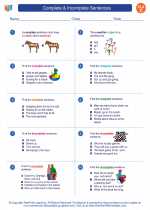 Complete & Incomplete Sentences
Complete & Incomplete Sentences  Worksheet/Answer key
Worksheet/Answer key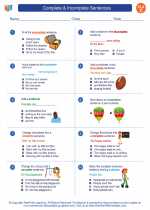 Complete & Incomplete Sentences
Complete & Incomplete Sentences  Worksheet/Answer key
Worksheet/Answer key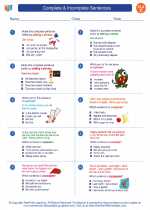 Complete & Incomplete Sentences
Complete & Incomplete Sentences  Worksheet/Answer key
Worksheet/Answer key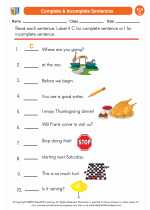 Complete & Incomplete Sentences
Complete & Incomplete Sentences  Worksheet/Answer key
Worksheet/Answer key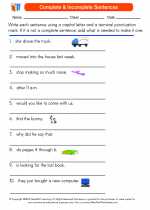 Complete & Incomplete Sentences
Complete & Incomplete Sentences 

 Worksheet/Answer key
Worksheet/Answer key
 Worksheet/Answer key
Worksheet/Answer key
 Worksheet/Answer key
Worksheet/Answer key
 Worksheet/Answer key
Worksheet/Answer key

The resources above cover the following skills:
LANGUAGE STANDARDS
Conventions of Standard English
Demonstrate command of the conventions of standard English grammar and usage when writing or speaking.